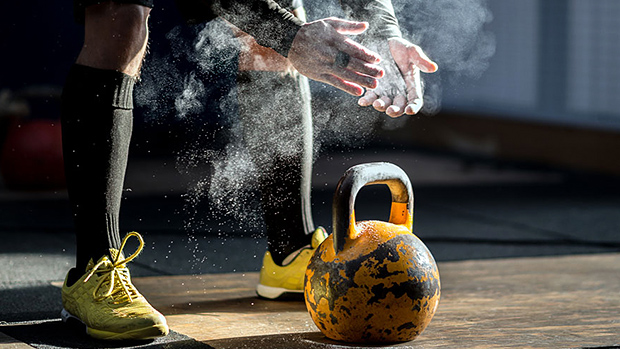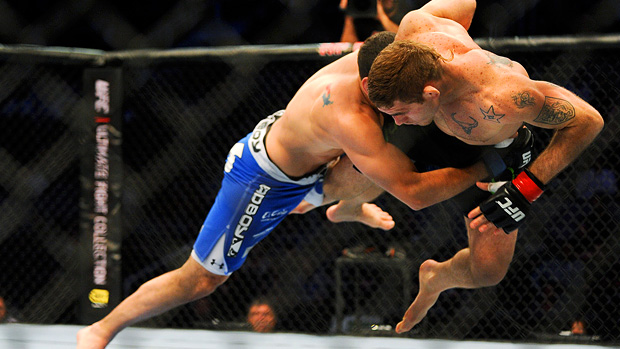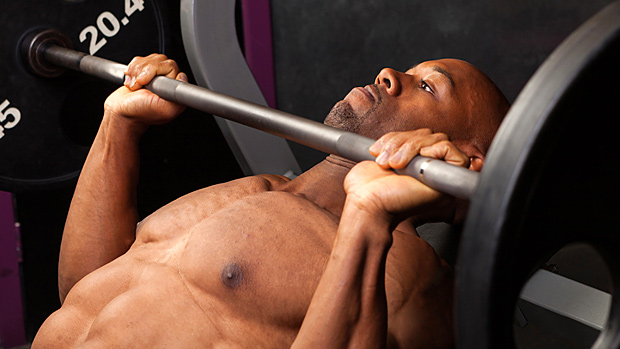How Do You Feel After Training?
Do you experience joint pain? Prolonged soreness? Injuries that refuse to heal?
Maybe you think you haven't been taking your recovery strategies seriously enough. You wonder if you've been shortchanging your sleep or not foam rolling or stretching enough. But what do you do if you get plenty of sleep and regularly roll and stretch yourself into a near coma? What if you did everything you were supposed to do, but your training is still suffering?
If that's the case, we need to look at your workouts. Training should be therapeutic. Yeah, therapeutic, meaning your muscles may be fatigued following a workout, but your body overall should feel better than when you walked into the gym. That means no joint pain and no feeling like you need to stretch the hell out of something to find relief.
This is actually easy to do. All you need to do is prioritize eccentric isometric training.
Eccentric isometrics were popularized by T Nation contributor, Dr. Joel Seedman. The idea is to forcefully and intentionally control the weight as you lower it, pause at the bottom, and explode the weight back up. Think of doing a box squat without the box and you'll know what I mean.
This training protocol has countless benefits:
- Maximizing the stress placed on your muscles while minimizing the stress on your joints
- Helping you find your body's optimal positioning during every movement
- Serving as a functional stretch
If we sit back and think about it for a moment, this is how our body functions during the majority of our daily tasks, such as sitting down and standing back up. We sit down in a chair (essentially an eccentric movement), work on our computer (pause), and then stand back up (a concentric movement). We typically don't sit down and immediately stand back up unless we're watching the last two minutes of an NBA finals game.
Here's a video showing an example of 1.5 rep eccentric isometric squats where Dwayne Hollis and James Romain of the Philadelphia Soul first perform a full squat, pause, go halfway up, go back down into full squat position, and then return to the top of the movement.
Notice during these movements how the pauses allow Dwayne and James to lock in their form during each phase of the movement while pushing their knees out to the side and pushing their butt back.
This pause at the bottom of the rep acts as a "functional stretch" by lengthening the muscles to their most optimal and most powerful length, which is exactly what we need both on the athletic field and off the field in everyday life.
This pause can be held up to 7 seconds before we start to lose tension. This isometric pause also minimizes the stress on the joint while maximizing the stress placed on the muscle. Instead of relying on our tendons and ligaments in the knee to bounce us back up to the top of the rep, we're now relying on the muscles to do the work.
A lot of people might think that taking a pause in between the eccentric and concentric will slow us down and that we should instead focus on the stretch-shortening cycle, which is an active stretch of a muscle followed immediately by the shortening of that same muscle.
(As an example, when you get ready to jump as high as you can, you quickly squat down before leaping high up so that the energy created by squatting down is stored momentarily and transferred to your leap.)
But an eccentric isometric movement has the potential for making the stretch-shortening cycle even more efficient due to the emphasis on training the muscles to fire explosively with maximal force produced out of the isometric pause.
This pause also eliminates the need for static stretching since performing eccentric isometric squats, hinges, lunges, horizontal pushes, horizontal pulls, vertical pushes, and vertical pulls will provide your body with the ideal amount of mobility and stability.
The key to this squat pattern, and all movement patterns, starts with the feet. Take a look at the video of Dwayne and James again – they activate their feet by pushing their big toes into the ground and pushing their feet out to the side. This generates an arch in the foot and properly stacks the ankles, knees, and hips.
The best way to learn this foot activation technique is through performing a foot push-out that includes standing in place with both toes straight ahead with a proud chest and tight stomach while again pushing your big toes into the ground and your feet out to the side.
When done correctly for the first time, you'll feel pressure on your ankles, knees, and hips, especially if you have flat feet. Perform these foot push-out movements every day when you wake up in the morning and before you go to bed for three sets of 20-seconds each.
You'll soon start to see a major difference in the strength in your feet, along with the alignment of your ankles, knees, and hips, all of which will make eccentric isometric training more rewarding.
Let's look at another example of eccentric isometrics. Here's a video of an eccentric isometric bench press performed by LaRico Stevenson of the Philadelphia Soul.
Notice that the bar doesn't touch LaRico's chest. He's not actually trying to stop the weight from reaching his chest, but the tension he's creating stops the bar from lowering any farther. He'd actually have to relax to allow the bar to come down any more and this would result in internal rotation of his shoulders.
This is a great example of LaRico letting his body tell him how to perform the movement through creating and maintaining maximal tension through each rep.
If you find you're blaming poor recovery protocols on your pain or injuries associated with training, or you're spending more time warming up, foam rolling, and stretching just to make it through a training session, it really is time to question how you're doing the exercises in your workouts.
To give eccentric isometrics a try, just continue to perform your exact same current training program, but perform the exercises using the eccentric isometric protocol:
- Do reps in the 1-5 range.
- Start off with about 50% of your 1RM, but work up to eventually using 80-90% of your 1RM.
Use them on any and all big movement patterns:
- Squats
- Hinges
- Lunges
- Horizontals pushes
- Horizontal pulls
- Vertical pushes
- Vertical pulls
Key Coaching Cues, Lower Body
- Activate the feet
- Grip the weight as hard as possible
- Keep a proud chest
- Keep the abs tight
- Push the knees out
- Push the butt back
Key Coaching Cues, Upper Body
Same as above, plus:
- Drive the elbows forward or back




